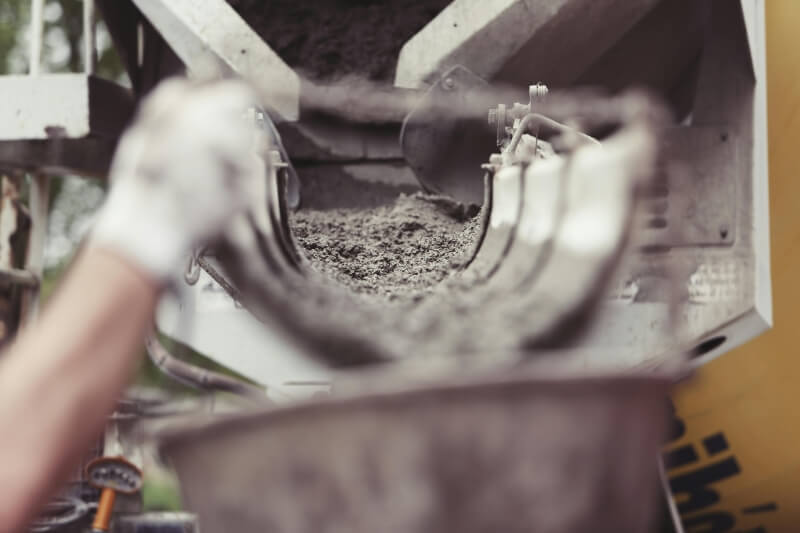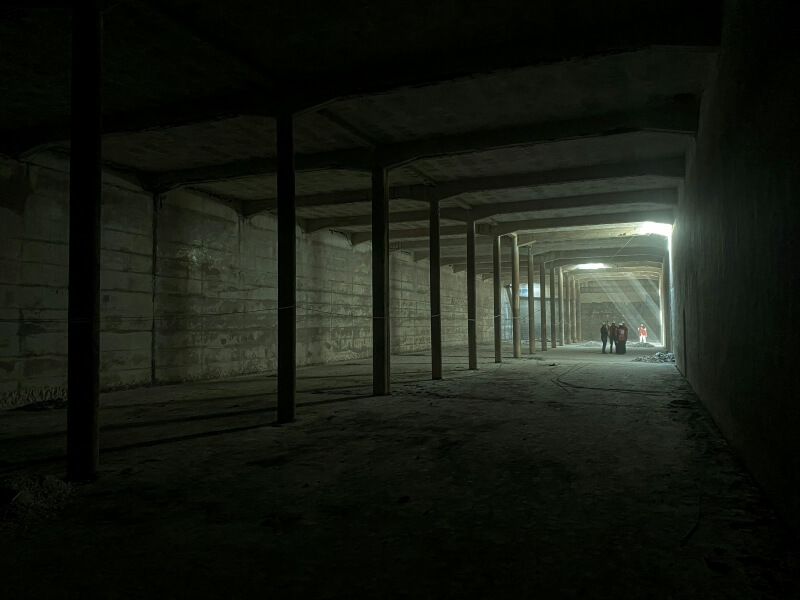01732 496 523
For architects and specifiers, concrete is the literal and figurative foundation of countless structures. Its versatility and strength make it a go-to material but, in many cases, increased performance is required to meet specific project demands. This is achieved by the inclusion of performance-enhancing concrete additives, and this article will concentrate on the chemicals that are added at the batching plant under fully controlled and regulated conditions.
What Are Concrete Additives?
Concrete additives, or admixtures, are precisely engineered materials incorporated during the concrete mixing process. These admixtures can be used to modify the characteristics of the concrete both during the placement and in terms of its cured performance, offering a powerful tool to address a wide range of challenges.
How do Concrete Additives Enhance Performance?

The world of concrete additives is vast, with each admixture offering unique benefits. Here’s a closer look at some of the key functionalities:
- Workability and Setting Time: Fresh concrete’s workability significantly impacts placement and finishing. Additives such as plasticisers or superplasticisers improve workability, allowing for easier flow and better compaction. Retarders delay the initial set, providing more time for transportation and placement, especially in hot weather. Conversely, accelerators expedite the setting process, crucial for cold weather concreting or fast-track construction schedules.
- Strength and Durability: The core function of concrete is to bear weight and resist stresses. Strength-enhancing additives can significantly improve compressive and flexural strength. Microsilica admixtures, for example, densify the concrete matrix, leading to superior strength and abrasion resistance. Additionally, other durability-enhancing additives can improve resistance to a range of factors, such as freeze-thaw cycles, chloride penetration, and chemical attack, extending the lifespan of the structure.
- Air Entrapment: In cold climates, water within concrete can freeze and expand during setting, causing cracks and spalling. Air-entraining additives introduce microscopic air bubbles that act as pressure chambers, mitigating freeze-thaw damage.
- Other Specialised Functions: Several specialised concrete additives cater to specific needs. For instance, self-consolidating concrete (SCC) uses admixtures to achieve high flowability without segregation, ideal for congested reinforcement or complex formwork. Additionally, fibre-reinforcing admixtures can be used to improve crack resistance and tensile strength.
Concrete Additives for Waterproofing Applications

Waterproofing is a crucial consideration for below-ground concrete structures. Whilst well-designed and well-placed concrete is already inherently waterproof, concrete additives that improve or extend the workability can result in better compaction of the concrete, resulting in a structure that offers a greater level of resistance to water.
The main benefit of concrete additives for waterproofing though, is the ability to enhance the self-healing properties of concrete when it is used to provide a Type B form of waterproofing to British Standard 8102:2022.
Achieving this requires the concrete to be designed to the relevant parts of BS EN 1992. All concrete shrinks during the curing process, and if reinforcement steel was not included the concrete would develop a low number of large cracks, leading to potentially catastrophic volumes of water ingress. BS EN 1992 is therefore used by structural engineers to design the reinforcing steel to restrict concrete shrinkage and limit cracking to a high number of cracks that are so small that water is unable to pass through the concrete.
It is understood that concrete cracks of 0.2 mm in width have autogenous (self-healing) properties. When water attempts to squeeze through these cracks, it reacts with calcium hydroxide and microsilica to form a crystalline structure that effectively seals the crack. However, a large volume of expensive steel is required to control cracks to just 0.2 mm.
Instead, BS EN 1992 allows crack widths to be controlled to 0.3 mm, which requires approximately 50% less steel volume and so provides substantial cost savings.
However, 0.3 mm cracks are not considered to be self-healing, and this is where a concrete additive is most beneficial. By adding a crystalline admixture to the concrete, the self-healing properties of the concrete are enhanced, ensuring that even 0.3 mm cracks will be sealed just as effectively as 0.2 mm cracks would be.
Essentially, when considering waterproofing admixtures, there are two main types:
- Hydrophobic and Pore-blocking Admixtures: These admixtures fill the controlled cracks and pores and create a more watertight matrix. This reduces the permeability of the concrete, reducing water penetration.
- Integral Crystalline Waterproofing (ICW): ICW admixtures contain chemicals that react with moisture within the concrete to form microscopic crystals. These crystals fill cracks and pores of up to 0.4 mm, significantly reducing water permeability.
- Where there is no concrete: Regardless of the effect of a concrete additive in increasing the waterproofing characteristics of the concrete, it will not improve a structures’ ability to resist water pressure at construction joints or where the concrete is penetrated.
An effective Type B waterproofing strategy that includes additives must also specify measures to seal the construction joints, tie-bolt holes and service penetrations through the concrete.
How do I Select the Right Concrete Additive?
With such a diverse range of concrete additives available, selecting the right one requires careful consideration.
- Project Requirements: A clear understanding of the project’s specific demands is paramount. Factors such as exposure conditions, desired strength, and placing requirements all influence the selection process.
- Compatibility: Not all concrete additives are compatible with each other. It will be necessary to assess potential interactions between the chosen additive and the base concrete mix, ensuring a successful outcome.
- Site Conditions: Jobsite factors such as weather conditions and placing techniques can influence the selection process when choosing the most suitable additive for your specific project environment.
Unlocking the Potential of Concrete with Additives
Concrete additives are a powerful tool in the hands of architects and specifiers. By understanding their functionalities and collaborating with a specialist, you can unlock the full potential of concrete in your projects. From enhanced workability and setting times to superior strength, durability, and waterproofing, concrete additives can help you achieve lasting results.
Contact Newton Waterproofing Systems
We are dedicated to providing high-quality waterproofing services and technical support throughout the UK, and our team of experienced professionals and specialist contractors have the expertise to tackle even the most challenging projects and can assist with the specification of the concrete additive regardless of the performance requirement. We adhere to industry standards and use proven methods, ensuring long-lasting results and peace of mind, so contact us today to get started.
Speak to our friendly, expert team
Our staff are able to provide guidance for projects of all sizes, whether you require some general advice about damp or waterproofing, or support with technical drawings and specifications.














